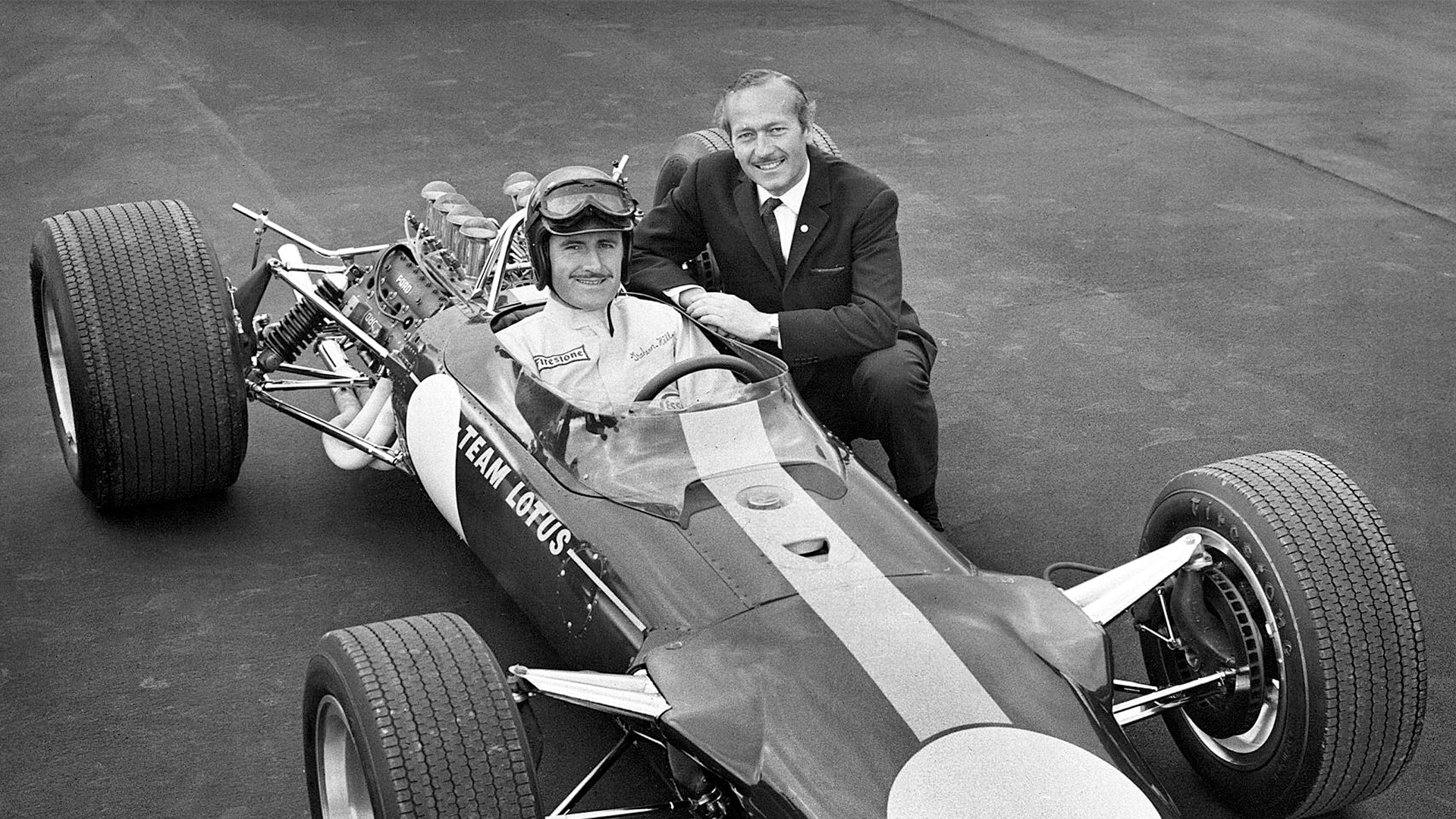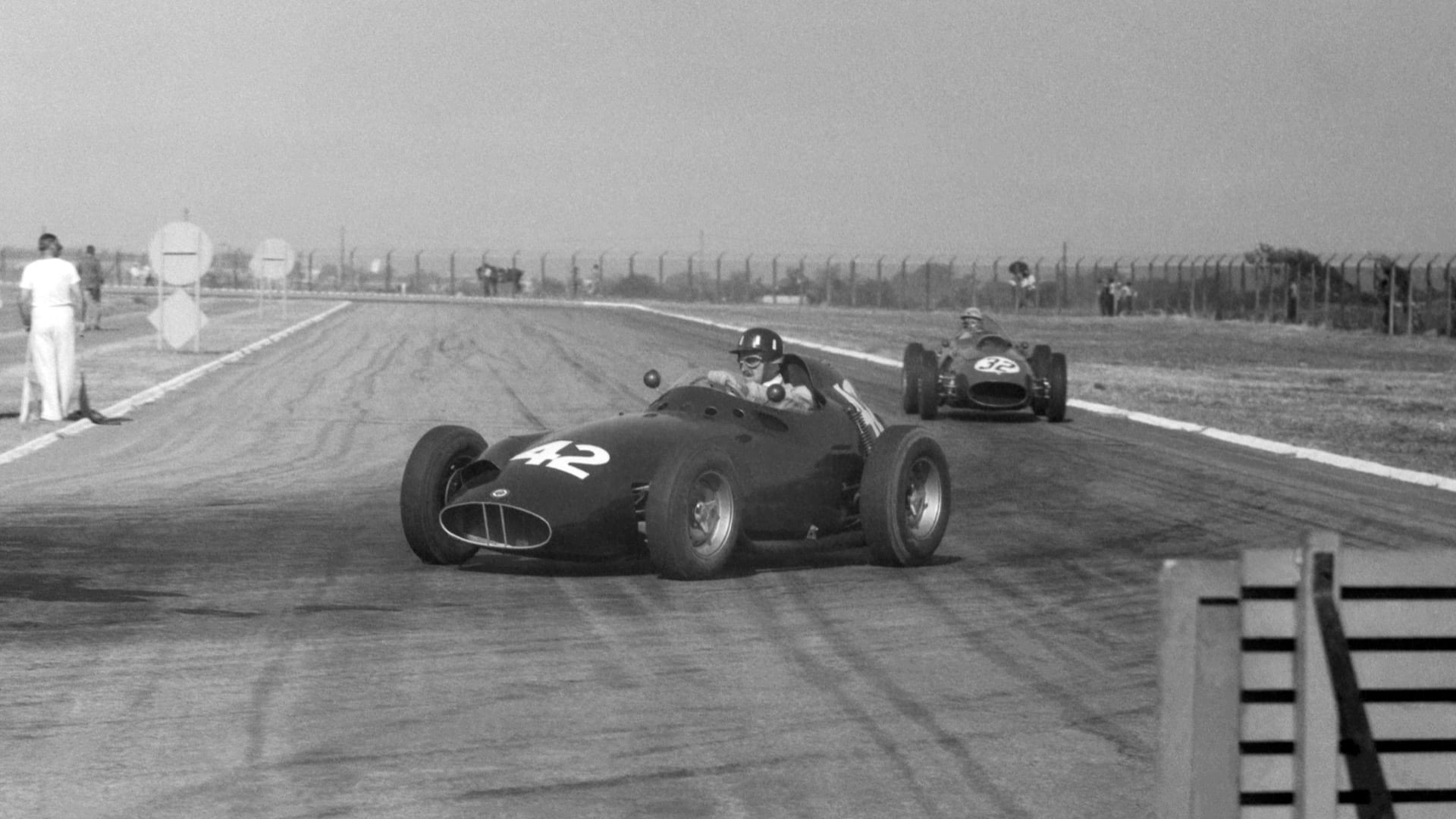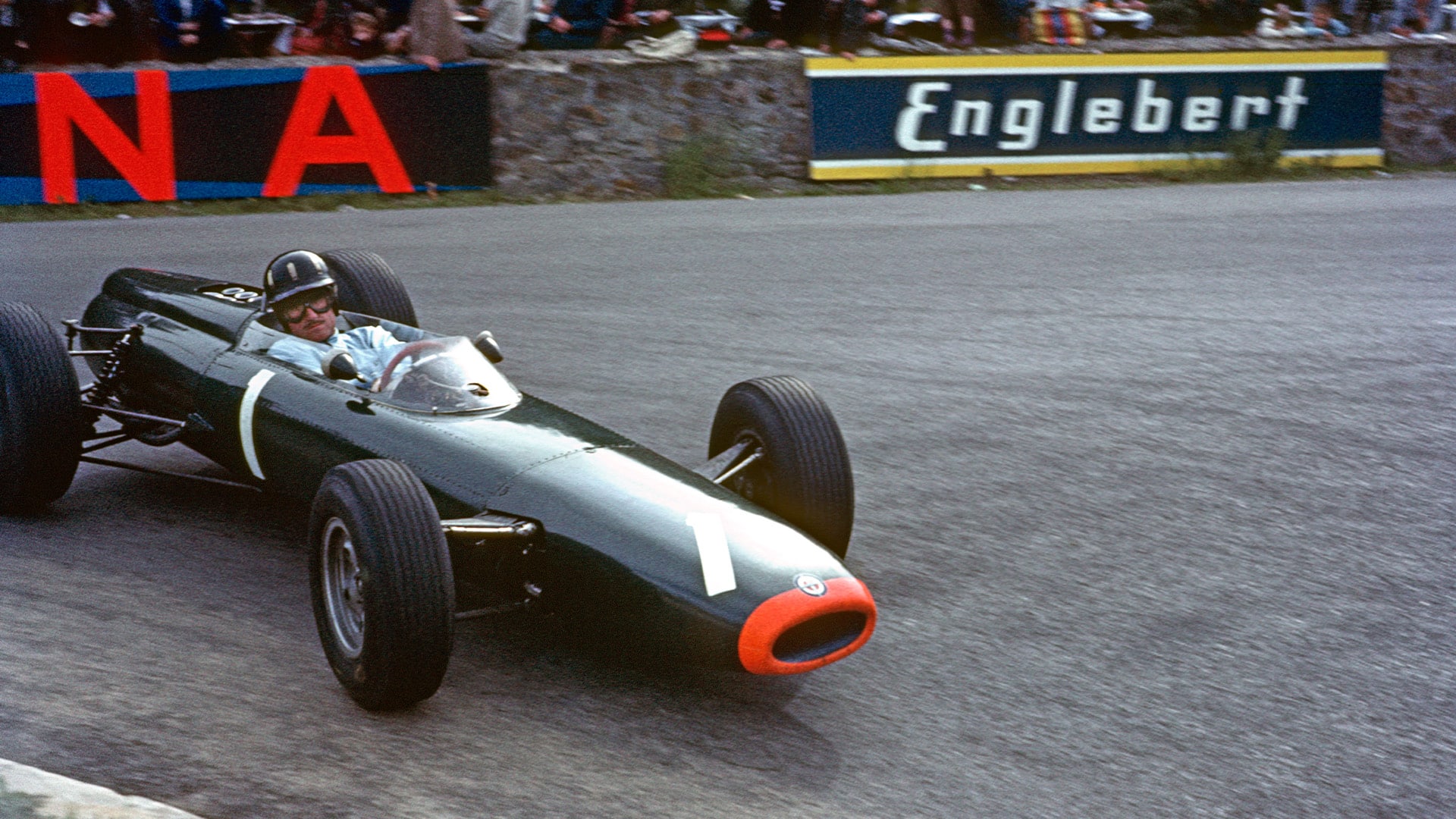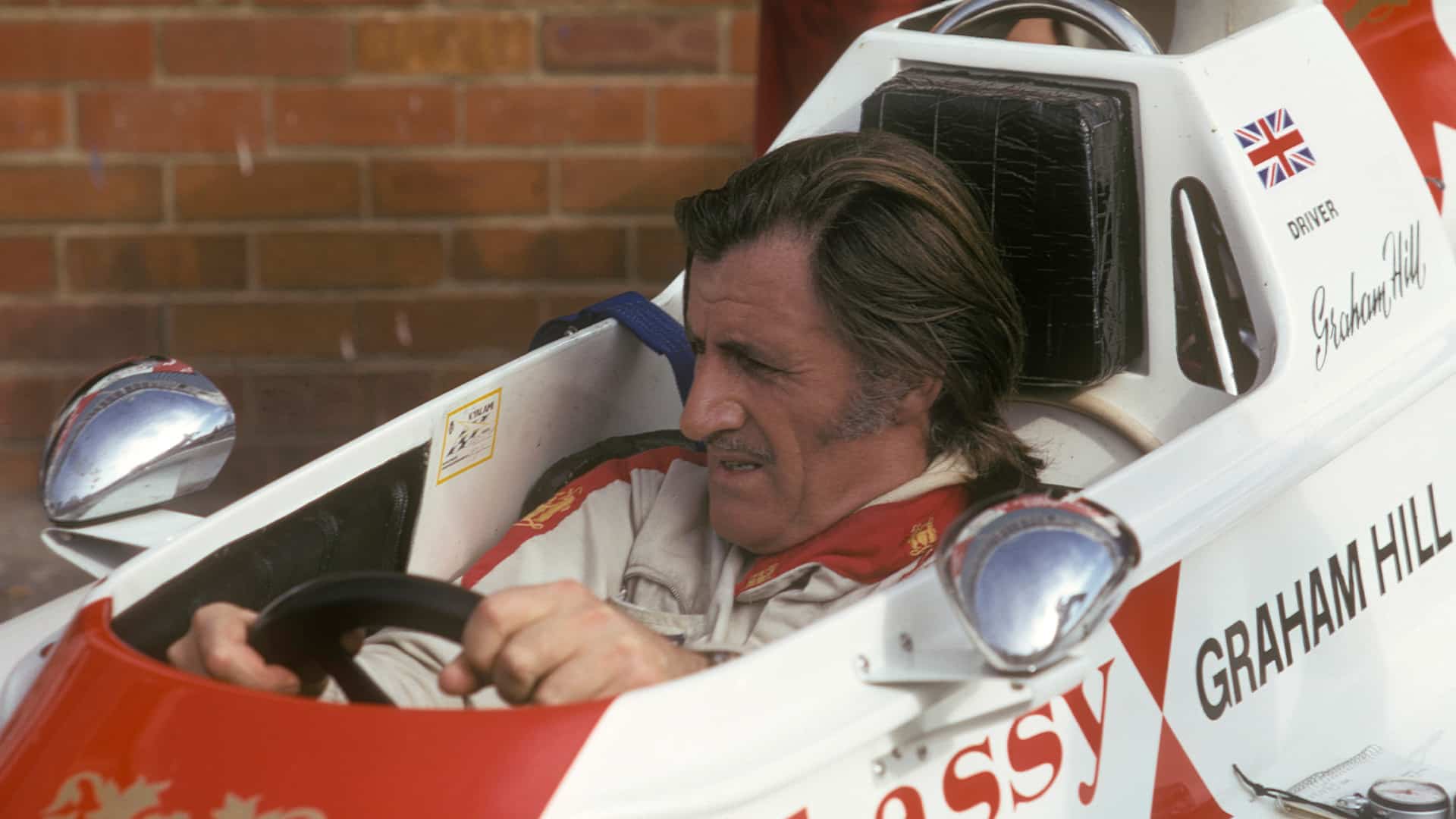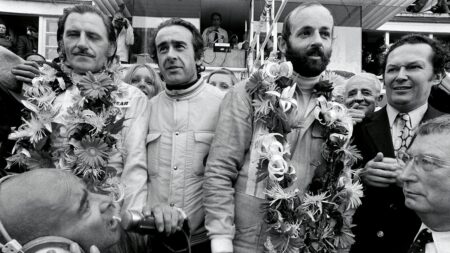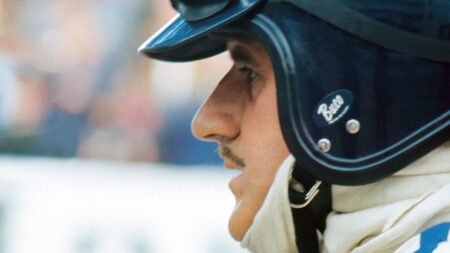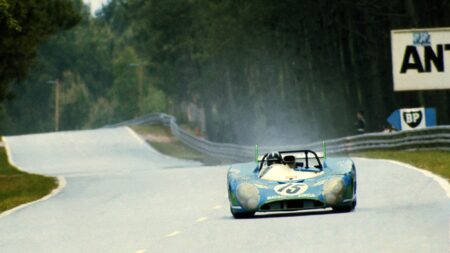Hill endured further frustration during the 1959 F1 season with seventh in the Dutch GP a rare finish. Even then, he lost a lap and a promising fifth position when he had to stop to investigate why smoke was filling the car’s cockpit. That team-mate Innes Ireland, who had been running behind him at the time, went on to finish fourth (to match Lotus’s best result to date) must have been galling.
Switch to BRM and first F1 world title
Frustrated after two seasons of failure and no sign of progress, Hill switched to BRM for 1960. The Bourne concern had just won the 1959 Dutch GP thanks to Jo Bonnier and they saw Hill’s engineering background as crucial as it developed the new P48. He qualified on the front row for the opening round in Argentina and finished third in the Dutch GP at Zandvoort – his best result so far. Hill appeared on course for a breakthrough victory when he took the lead of the British GP with 22 laps to go. However, he was suffering brake problems and he spun at Copse with just five laps – stalling and handing the win to World Champion Jack Brabham.
In keeping with the other British teams that were not ready for the new 1.5-litre F1 rules, BRM were handicapped during 1961 by having to run uncompetitive four-cylinder engines before its new V8 was ready. That was not until the Italian GP and even then, Hill only ran the unit during practice. Fifth in the United States GP, despite a pitstop to reattach his magneto, was Hill’s best result of the year. That Lotus won its third GP that day (and the first for the works) team led to questions as to whether Hill had made the right decision to leave.
However, any such doubts were erased in 1962. The V8-powered BRM P57 was now fully sorted and Hill won non-championship races at Goodwood and Silverstone before the season proper began. That promise was confirmed in the Dutch GP as Hill took control after the impressive Clark was delayed in the pits for nine laps – finally scoring his maiden GP win. Engine failure with eight laps to go lost certain victory in Monaco and he finished second behind Clark after qualifying on pole for the subsequent Belgian GP. Back-to-back victories in Germany (despite a fire extinguisher loose in his cockpit) and Italy were followed by second-place at Watkins Glen behind title rival Clark. That set up a winner take all showdown in South Africa – Hill clinching a fourth win of the year and his first World Championship when the Scot retired from the lead.
Birth of “Mr Monaco”
His title defence in 1963 included the first of five Monaco GP victories (eventually earning the sobriquet “Mr Monaco”) but the reliability that had been crucial a year earlier had deserted the team. He also won the United States GP and scored a couple of third-place finishes as he tied team-mate Richie Ginther as runner-up behind Clark.
Hill was part of the drama that defined the 1964 World Championship. Further victories in Monaco and the Unites States plus three successive second-place in the middle of the season gave Hill the chance of snatching a second crown at the Mexican GP finale. In the event, he made a poor start but he soon climbed to third. That would have been good enough to win the championship but he was hit by Lorenzo Bandini’s Ferrari as the Italian attempted to pass. Out of the race, Hill’s hopes lay in tatters before the dominant Clark retired on the last lap. Hill was briefly “World Champion” once more but Bandini let team-mate John Surtees by to claim that prize. He also shared a Maranello Concessionaires Ferrari with Joakim Bonnier in selected sports car races that year – finishing second at Le Mans and winning the Reims 12 Hours and Paris 1000Kms.
There was no stopping Clark in 1965 although Hill won at Monaco while the Scotsman was busy beating the regulars at Indianapolis. Although unable to match his rival, Hill finished every race bar one (including another US GP success) and was second in the World Championship for a third successive year.
Although 1966 proved frustrating in F1, with Hill failing to win a GP for the time since 1961, the year provided one of his most important (and lucrative) victories of his career. Walt Hansgen was slated to drive one of John Mecom’s Lola T90-Fords in that year’s Indianapolis 500 but the veteran died a week after crashing during April’s Le Mans test weekend. Hill was drafted in as his late replacement and the rookie qualified the “American Red Ball Special” on the outside of row five. Having avoided the first lap melee, Hill inherited victory when his team-mate (that day and in F1) Jackie Stewart retired with ten laps to go. Having recently learnt to fly, Hill used his winnings to buy a light aircraft which he used to travel to races.
Hill returned to Lotus in 1967 when accepting the challenge of direct comparison with the mercurial Clark in Chapman’s team. The team had an exclusive contract with Ford to develop the new Cosworth-designed DFV engine. Second in Monaco driving an old Lotus 33-BRM, he qualified the new Lotus 49-Ford on pole position for its debut in Holland although he retired from the lead. Mechanical failures in the next four GPs denied probable victories in France and at Silverstone. He was second at Watkins Glen and finished sixth equal in the championship.

